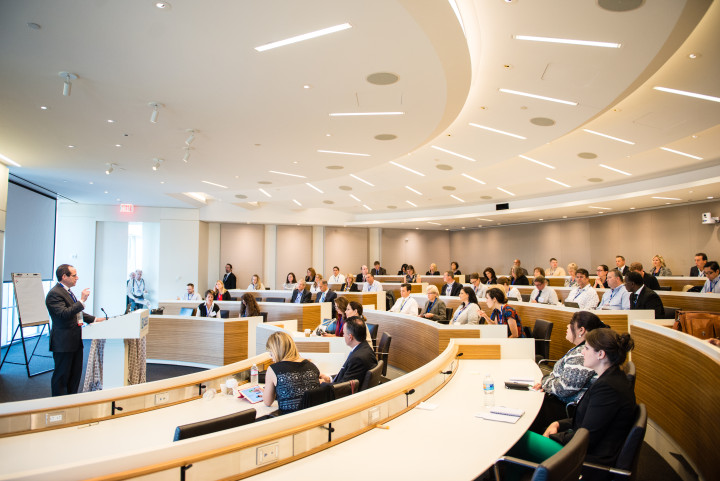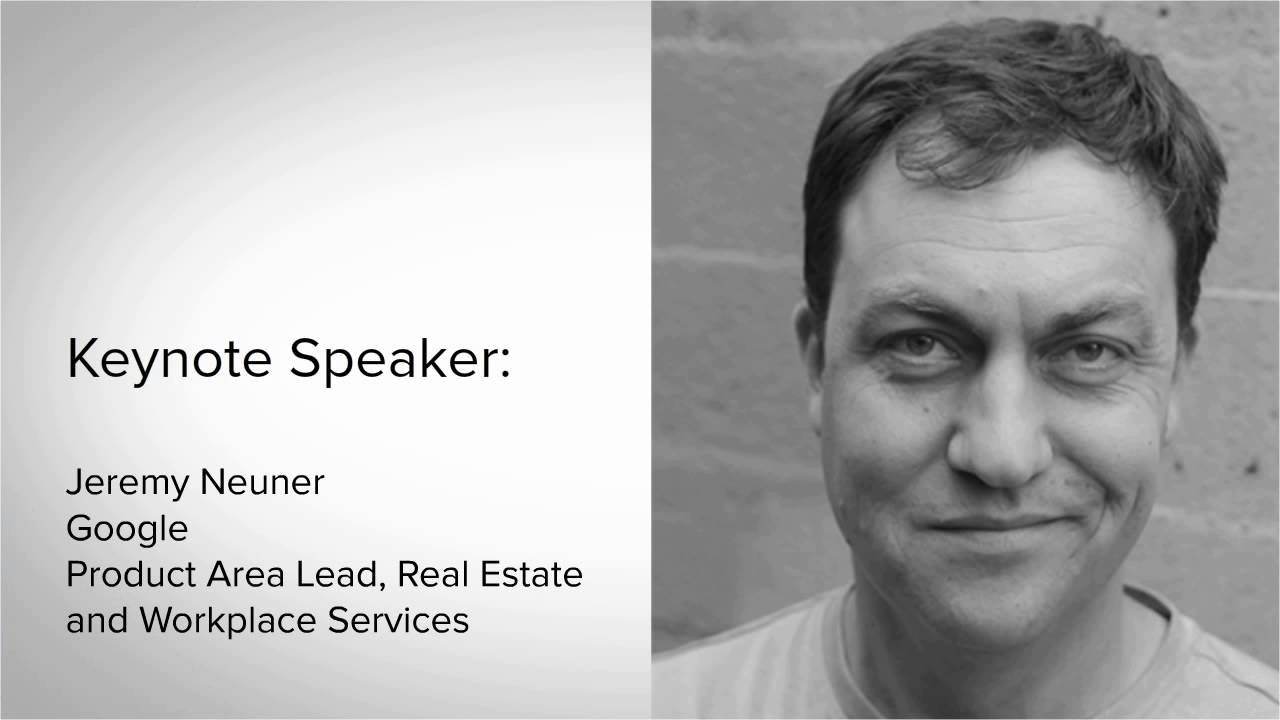What to expect at the sixth annual Agile Workplace Conference, presented by AgilQuest.

AgilQuest’s sixth annual Agile Workplace Conference — “Workplaces That Innovate” — will take place on Tuesday, September 13 in Washington, D.C. The AWC provides a forum for attendees to learn about innovative workplace strategies, ideas, and best practices from workplace experts and practitioners. We’re proud to be a partner and a sponsor, and we’re really looking forward to the event. Below, find descriptions of five of the sessions that we’ll most certainly be attending.
Hope to see you there!
https://youtu.be/qspm4FL0HjY
1. Keynote — “Exploring a New Definition of Entrepreneurship”
One of Google‘s top workplace minds, Jeremy Neuner, will share his perspective on what “work” means these days, and how the workplace has ceased to exist as a single place you go and has transformed into a thing you do, wherever there is a decent WiFi signal. With our smartphones, laptops, and tablet computers, many of us now work just about everywhere except, well, at work.
In his keynote address, Jeremy, a pioneer in the coworking industry, will explore the implications, for both workers and for companies, of this once-in-a-century shift in how and where we work. He’ll talk about how Google is re-thinking its famous workspaces, making them more flexible and collaborative. Finally, Jeremy will shed light on how this shift in the workplace has the potential to make workers more engaged in their companies and in their communities. And if we get this once-in-a-century shift right, we might just be able to reclaim a bit of sanity and our humanity.
This energetic keynote will cover:
- Encroachment of work into all aspects of personal lives
- Implications of the work-anywhere shift
- Resulting increased engagement at work and within communities
- Self-balancing of the personal and work within this anywhere, anytime WiFi-connected world
2. “The Innovation Ecosystem: Findings from Gensler’s 2016 Workplace Survey”
In this interactive general session, Janet Pogue McLaurin, a principal at Gensler, will show how the nature of work and the places in which work happens are both facing significant — and potentially volatile — paradigm shifts. Workforce engagement is at the lowest levels since 1978, employee engagement is stagnant, and workplace stress is on the rise. The latest global workplace research indicates that the workplace itself is not maximizing employee engagement and innovation, and in fact creating inequity among workers. Given the shifting global landscape of work today and in the future, how can organizations across industries and geographies harness and even accelerate the pace of innovation that is so vital to success?
McLaurin will share critical insights on how and where work is happening today, how effectively the workplace supports that work, and how workplace interventions can be made immediately to directly impact overall employee experience, all based on Gensler’s Workplace Survey research findings. This data is based upon on surveys from over 9,200 office workers in the U.S., U.K., Asia, and Latin America. The presentation will address key findings as well as cultural similarities and differences.
3. “Data-driven Workplace Design: Knowing How and Why to Leverage Workplace Analytics”
Many types of data are encountered in a typical client workplace project. However, it isn’t always clear how to best use these data, which types of data are most useful where and when, or even what sources of data are available for use in each project. There are even times when data is available, but due to the amount of data, it seems too large to be useful. But data is often a critical element to good workplace design and can even mean the difference between good design, amazing design, and high performance results.
In this facilitated session, Angela Ramer of HKS and Jeremy Deyo of AgilQuest will review:
- The major types of qualitative and quantitative workplace data
- Share common examples of each type of data
- Walk the audience through advantages and drawbacks of each
Focus will be given to the potential value of each type, where and when to best use each as you deliver design services (e.g., systematic presence data from turnstiles, badging, or access control systems, occupancy counts, and real estate).
Ethnographic inquiry and quantitative software, two more approaches to collecting/analyzing/applying data, will also be presented via insights and live demo. These additional angles will educate the audience on the value and importance of data triangulation and its role in confident, data-informed design. The advantages and limitations of these additional approaches as well as an assessment of workplace analytics technology will be discussed and appropriate applications will be shared via project examples.
4. “The New Real Estate Currency: Building Agility”
In this breakout session, Adam Stoltz, SVP of corporate workplace strategy at Transwestern, will explore how companies frequently look to space and technology to drive organizational agility and the mobility of their people. But frequently, the achievement of that agility is limited by the building they choose to occupy. In some cases, without them even realizing. What if that the agility of real estate could be considered upfront, from the beginning?
From the perspective of what has historically been viewed as a rigid liability, rather than an agile investment, this session will:
- Present a method to assess and quantify building agility as part of the real estate decision-making process
- Highlight technology’s role in delivering towards the promise of making buildings more agile, more responsive, and more supportive of the organizations and people that occupy them
5. “The Rise of Great Expectations: Technology’s Continual Impact on the Workplace”
The Technological Revolution is constantly reshaping the future of work. Technology — both the visible and the invisible — transforms the workplace in part because it transforms its inhabitants. The impact of the major drivers of change, which include globalization, technology, and demographics, raises many questions as to how to ensure optimal worker engagement and productivity. In this session, Rachel Starobinsky of TPG Architecture will explore the effects of technology in the workplace, and will provide insight into the workplace of the future.
Participants will learn the following:
- The key tensions present in today’s workplace, and the evolving concept of work
- The influence of technology across all business sectors
- The impact technology has on today’s workforce, and why it is important for organizations to take note
- The progression of workplace design, and foresight into what can be expected in the future


